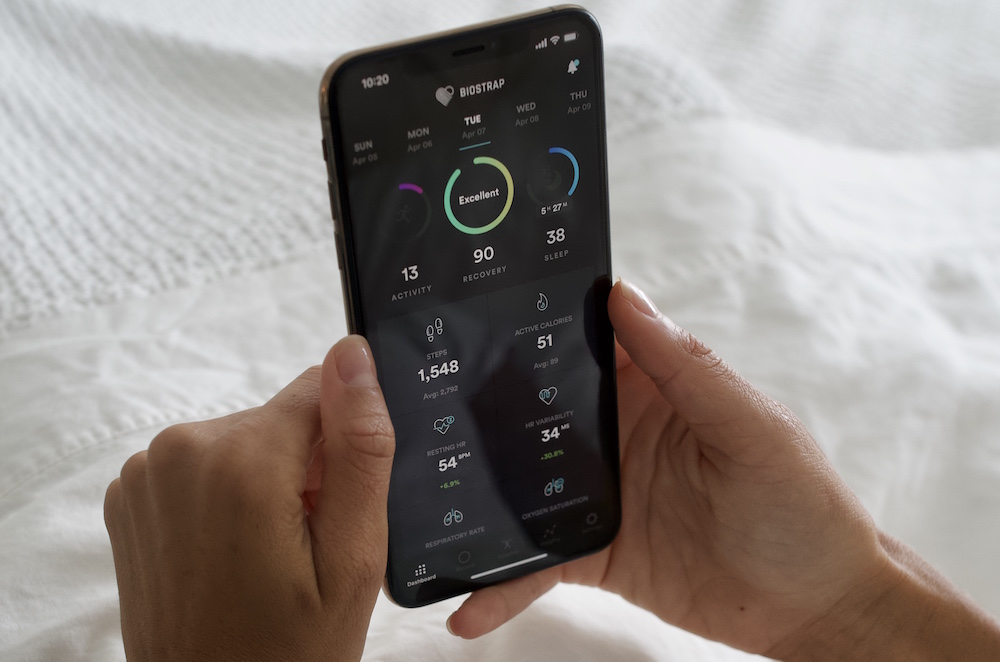With wellness and wellbeing now higher up on the agenda than it has ever been, Ari Peralta, Founder of Arigami, conducts some research of his own to understand and explore whether or not smart design can be utilised to enhance not only the consumer journey but also the mental health of guests checking in…

What does the future of smart hotels look and feel like? Does smart design include wellbeing? How will hotels adapt to an exponentially connected future? Welcome back to our exploratory series Hotel Designs Lab. My innate curiosity for what’s next in human wellness and hospitality design took me in search of outside industry experts and case studies that could potentially answer these questions and provide us all with actionable insight, in particular, for hospitality architects, designers, suppliers and brand decision makers. Each of our articles – from wellness dining to biophilic design and sensory architecture – tackle a complex hotel design topic through the lens of interdisciplinary experts.
With everyone talking about technology, electrification and automation, I wanted to ask experts at the forefront of technological innovation, if this first wave of smart hotel design includes (or can include) a space for smart wellbeing? Pre-Covid, wellbeing and mental health had already become a rapidly expanding field of interest for designers and architects alike. Now, it’s probably easier to ask who isn’t talking about it!
Wellness needs to evolve beyond the spa
Technologists, data scientists, engineers, scientists and hybrid designers are helping the industry transition into “smart design”. This shift from analog to automated hotel operations represents a unique opportunity to bring wellbeing into the conversation and reimagine what a smart hotel can be and do.
To understand how smart hotels can take an amplified view of their guest’s needs, we need to explore the challenges ahead and the solutions being pioneered today. Helping us navigate what’s next are BioStrap CEO and engineer, Sameer Sontakey; Industrial and Interaction Designer Ross Dowd and Co-founder of Transformative Technology Lab, Nichol Bradford.
- Sameer Sontakey
- Ross Dowd
- Nichol Bradford
Here’s what we’re covering in this article:
- What is smart design?
- Can Smart Design Benefit Guest Wellbeing?
- What Is Experience And Interactive Design?
- How To Design Seamless Hotel Experiences.
- Examples Of Wellness-Driven Experiences That Can Be Applied to Hospitality.
- How to embed wellbeing into your infrastructure.
What is smart design?
Smart design builds on advances in Machine Learning, Artificial Intelligence, and Data Analytics, to bring guests the best possible experience. Engineers like Biostrap CEO, Sameer Sontakey are finding new ways to transform how we approach healthcare (including self care).
When creating Biostrap he didn’t just set out to develop another “basic” wearable. Sontakey’s goal was to bring to life a health monitoring platform that would democratise clinical-grade data and provide meaningful and actionable health insights. “I wanted to share a set of tools with the world that would help people optimise their sleep, recovery, performance, and overall wellbeing,” he explains.

Image credit: Biostrap
Engineers like Sontakey have a ‘systems approach’ to design. With a systems approach, hotels are already eliminating the checkout process, adjusting window tinting based on your preferences and even changing the digitally-displayed art on your walls based on your taste. And as wellness becomes a top priority across the board, we have to ask ourselves where can all this new technology take us?
Wearables like Biostrap can fit into many different scenarios and populations, smart hotel design being one of them. “Imagine a hotel where the health of the entire staff is being monitored with clinical reliability on a daily basis,” he added. “Such accurate and valuable insights will not only raise the awareness of each employee about their well-being, but managers and hotel owners can also have peace of mind that their staff is healthy. It’s especially relevant in this post-Covid era.”
It’s no large leap to imagine a smart hotel room that connects to your wearable device, and responds according to the data gathered. A guest’s room could react to a day spent staring at screens with subtly warmer lighting, to help you get better nights sleep. The opportunities for wellness focused smart design in hotel spaces are ever expanding.
Can Smart design benefit guest wellbeing?
Smart design can very much focus on wellbeing, and give insight into what often goes unnoticed. The most prevalent example of this is biometric data, which gives us an insight into our unique physical and behavioural characteristics.
It’s important to note that wellbeing is not a passing trend, although the term has gained a lot of traction in the last few years. As humans, we have always had the same range of needs to be the most fulfilled and productive we can be. The challenge has always been identifying how to cultivate balance when we need it.
We constantly use the most complex, data-driven equipment ever made: the human body. Keeping it healthy and balanced isn’t always simple. It involves the use of smart devices, accessible applications, passive biometrics, and rich data sources to help deliver augmented experiences directly to a user. However, what truly differentiates the age of smart design from what has come before is the adaptability of these systems. Smart design can help us by gathering and analysing data to help us get what we really need. That’s the power of focusing on new smart solutions within hospitality.
This new wave of smart wellness design seems to be shifting our approach on the most significant aspect of our built world: how do spaces, buildings and experiences affect the people and the environment who form part of it. Beyond human-centred design, we must evolve to become ‘systems’ thinkers.
Everything we know that exists in nature is part of another system, and each system acts as a container for other systems within it. As designers, bringing this new systems thinking into the foreground, means we must look beyond appearance or functionality.
What is experience and interactive design?
The hospitality industry has long understood that they aren’t just in the business of providing a place to stay; They are in the business of providing an experience. So, it’s worth asking: can a hotel promote wellbeing, interface with the best that technology has to offer… and end up being fun?
Ross Dowd is a multi-disciplinary, award-winning industrial and interaction designer based in Dublin. He creates products, experiences, and installations that facilitate meaningful interactions between people, as well as between users and their environment.
“Interactive Design is a discipline that listens to the needs and wants of guests, and responds in the most appropriate and guest friendly manner. Smart design is the current and future extension of this. It involves the use of smart devices, accessible applications, passive biometrics, and rich data sources to help deliver augmented experiences directly to a user. However, what truly differentiates the age of smart design from what has come before is the adaptability of these systems,” says Dowd.

Image credit: Arigami
Dowd is no stranger to experience design. He has worked as an Industrial Design Lead at Nokia Bell Labs, on Dublin’s Hardware Innovation Team, where they developed cutting edge wearable technologies and interactive demos (2016-2020). He currently works at the National College of Art and Design as a part-time lecturer and course coordinator for the Interaction Design Department.
As an interdisciplinary designer, Dowd’s mission has been to design products, experiences, and installations that facilitate meaningful interactions between people, as well as between users and their environment.
Dowd believes that by encoding the items and interactions we encounter in our day-to-day with more care and value, guests can experience increased mindfulness and satisfaction.
“By subtly removing unnecessary friction from any hotel experience, guests are empowered with spontaneity and more engagement,” he added. “The less stress a guest has to deal with, the more healthy and fun their experience can be.”
According to the bright designer, we are entering a new era of experience design. The prevailing ideas about ‘good design’ are changing. And many of the changes that will make the biggest impact are only beginning to form. There are a multitude of reasons for this, including cost, technical feasibility, and a well meaning intention not to overwhelm the user.
As our culture becomes more aware of the full spectrum of our needs—be they social, physical, spiritual, financial, or psychological—expectations increase. People want to deeply enjoy their time at a hotel, from the lobby to the room to the gym. It’s exciting to think of a world that doesn’t just have added functionality, but also added fun. Fun is, after all, the difference between something that works and something that works for us. We are still in the early days, but the signs point to designers succeeding.
Dowd shared an interesting example of this approach in action, Magic Band, utilised at Disney resorts. Noticing a rising dissatisfaction in the visitor experience,
Disney overhauled the service design of their parks and created a sophisticated backend to manage the customer experience. The Magic Band was the physical manifestation of this, a wearable device for the visitor to wear throughout their time in the parks. Equipped with a tracking mechanism, the band linked to their booking account with all their holiday details. After inputting their schedules and lunch options at the start of the day, the Magic Band takes care of the rest.
With a tap of the wearable against a terminal, visitors can access rides and attractions, at any time that suits their schedule. Families can walk into a park restaurant unannounced, sit anywhere and have their food find them at their table, as if by magic. The system was designed to invisibly manage and tailor the customer’s experience throughout their stay, removing unwanted stress and allowing families to truly enjoy their time in the parks.
To attempt something similar, hotels need not even design their own hardware, but can replicate the same experiences using guest’s phones. Using a phone and a hotel’s smart infrastructure, guests could just as easily have check-in logistics managed with the tap of a smartphone, as well as having their morning coffee awaiting them in the café on exiting the hotel. Plenty of lessons can be learned here, and what better customer satisfaction case study to learn from than the “The Happiest Place On Earth”?
Using transformative technologies to augment guest wellness
One of the best ways for our industry to improve is by learning from other sectors. By looking outside of our hospitality box, we as an industry can catch up to and even surpass the expectations of our guests. For hoteliers, that means finding wellness-driven experiences that can be adopted and adapted to the complex needs of their guests. For designers, that means finding new ways to augment the physical boundaries of space and scarcity of resources by augmenting experiences with scalable technologies.

Image credit: Arigami
Nichol Bradford is one of the leading welltech advocates brands go to when they are ready to scale. She has been a pioneer in wellbeing technologies since her days as a Gaming Executive in Silicon Valley and Shanghai for Epic Games. She also happens to run the largest ecosystem of conscious founders seeking to amplify wellbeing across sectors with ‘transformative tech’.
Bradford considers that wellbeing is universal to every human being and that with our new interconnected world, we have a unique opportunity to design a healthier and more sustainable future for all, using tech that is validated and socially conscious.
“There is no denying that we are all involved in one big experiment,” says Bradford. “Society is living through exponential advancements in technology and for hotels and designers, well, where do you even begin? The first thing I tell brands is to think of tech, beyond the framework of data for IT, and expand their focus towards data for optimising human potential and therefore optimising hotel experiences.”
It can seem far-fetched for those simply wanting their hotel remote to work, but it’s noteworthy to remember that tech is an umbrella term. Bradford adds that, “Tech consists of tools that augment who we are as humans. They can keep us alive, but can they help us thrive? The answer is yes! Tech allows us to scale wellness solutions globally. Most people assume tech has its own identity… I believe tech is a mirror of who we are and who we want to become. Our platform focuses on tech that has demonstrated validated impact, making it easier for sectors like hospitality to explore new revenue-making tools that promote guest and employee wellbeing.”
Bradford’s non-profit Transformative Tech Org enables founders with opportunities via events, workshops and funding paths for tech that focuses on positive mental health, social wellness and human potential impact. “Our global network of entrepreneurs, researchers, corporates and investors convene each day to shape the future of tech with purpose.”
Bradford shares more on some of the top wellbeing technologies hotels should have one their design radar:
- Muse, an immersive meditation device that utilises EEG to provide real-time neurofeedback and biofeedback, works to help individuals build a consistent meditation practice at scale. Such a device helps address our global mental wellbeing gap by providing a tool for users to learn to calm their mind.
- One of the top personalised health-tracking and research grade devices include Oura, which helps users track their capacity to perform, sleep quality and activity levels. Oura provides users with access to their physical and mental wellbeing, allowing them to be aware and in control of their own health.
- TRIPP is leading the XR wellness space as they provide clinically validated experiences that focus on developing fitness for our inner selves. Utilising the sensory and immersive feature of VR, TRIPP aims to help users develop their own ability to self-regulate, enabling them to live more happy and healthy lives.
- Feel works to revolutionise and transform our existing methods for mental health care. It utilises biomarkers and digital therapeutics to help individuals continuously monitor their mental wellbeing in real-time and build resilience through self regulation tools.
How to embed wellbeing into your smart hotel infrastructure
We’ve covered a lot of territory, from smart design in general to its implication for human flourishing. Smart hotel design has indeed arrived, and should be welcomed into the hotel wellness space as an effective means of providing bespoke transformative experiences.
From programming and subtle embedding of haptic feedback, to audio responses, adaptive lighting and even fragrance release systems are all possible, and should be at least considered when designing a guest facing experience.
This next decade represents a shapeshifting phase for hospitality. Hotels are actively renegotiating what their products and services mean to the guests, and as that analysis takes place, it is worth beginning a dialogue with the sensory designers, wearable technologists, and interaction designers that are already helping other industries amplify their wellbeing footprint through smart design. That’s why we are having that conversation here. Bringing together engineering, the latest advances in technology and the breakthroughs of smart design into your frame of reference, so that together, we can make “wellbeing”, our mission forward.
Actionable Quick Tip from our experts to hotel designers:
“If we learned anything in the past couple of years during the pandemic, it’s that our health is more important than ever, and prevention practices and modalities should be high priority whether we are at work, at home, or in a social setting. The hospitality industry is no different. Hotel guests should feel safe and not have to avoid interacting with hotel staff because they’re worried about getting sick while on vacation or a business trip.Smart design, especially highly reliable wearable technology, like Biostrap, can provide a future that ensures safety, optimises performance, and improves overall well-being on a bio-individual basis.” – Sameer Sontakey
“My plea to the designers of these future smart hotels is to focus on the humans before the features. Rather than over-saturating spaces with all the smart tech potential in the world, focus on satisfying the fundamental needs of your guests in the most frictionless manner possible.” – Ross Dowd
“I encourage you to expand your skill set by making small yet meaningful efforts towards learning and growing with technology by networking with transformative technologists.” – Nichol Bradford.
Main image credit: Arigami




